
Introduction
Brief Introduction to the NHL
The National Hockey League stands as the pinnacle of professional ice hockey, captivating audiences with its intense gameplay and storied traditions. Founded in 1917, the NHL started as a modest Canadian league with just four teams. Over the years, it has evolved into a global phenomenon, boasting 32 teams from across North America, including both the United States and Canada. The league is known for its fast-paced, hard-hitting action, where players showcase a unique blend of speed, skill, and physicality on the ice.
Importance and Influence of the NHL in the Sports World
The NHL’s importance in the sports world cannot be overstated. It holds a prestigious place among the top professional sports leagues in North America, alongside the NFL, NBA, and MLB. The NHL has a rich history of legendary players, unforgettable moments, and intense rivalries that have shaped the culture of hockey and influenced other sports leagues worldwide.
The NHL’s influence extends beyond the ice rink. It plays a significant role in promoting the sport of hockey globally, fostering youth development programs, and expanding the sport’s reach to new audiences. The league’s international player base, with athletes hailing from countries such as Sweden, Russia, and Finland, highlights its global appeal and the universal love for the game.
Moreover, the NHL has been a pioneer in adopting new technologies and innovations. From advancements in player safety equipment to the integration of sophisticated analytics and video review systems, the league continually evolves to enhance the game experience for players and fans alike. The NHL’s commitment to growth and innovation ensures it remains at the forefront of professional sports.
The NHL blog post provides a comprehensive overview of the league’s history, structure, and cultural impact. It examines major teams, rivalries, notable players, and landmark moments to deepen readers’ appreciation for the NHL’s enduring legacy. The post also highlights the league’s global influence, technological advancements, and community initiatives, showcasing its broader influence on sports and society. By the end, readers will understand the NHL’s significance and feel inspired to engage more deeply with hockey through attending games, following teams and players, or participating in community events.
History of the National Hockey League
Founding and Early Years (1917-1942)
Formation and Original Teams
The National Hockey League (NHL) was founded on November 26, 1917, in Montreal, Quebec, as a successor to the National Hockey Association (NHA), which had been plagued by internal disputes. The original NHL comprised four Canadian teams: the Montreal Canadiens, the Montreal Wanderers, the Ottawa Senators, and the Toronto Arenas. This nascent league quickly garnered attention with its fast-paced gameplay and fierce competition, laying the foundation for what would become a global sports phenomenon.
Challenges and Milestones
The NHL’s early years were fraught with challenges, including financial instability, player disputes, and the Spanish flu pandemic. The league also faced competition from other hockey leagues, which threatened its survival. Despite these obstacles, the NHL expanded by adding the Quebec Bulldogs in 1919 and the Boston Bruins in 1924, marking its first foray into the United States.
One of the league’s significant milestones came in 1926 with the addition of the Chicago Black Hawks, Detroit Cougars (later the Red Wings), and New York Rangers, further solidifying the NHL’s presence in the U.S. The establishment of the Stanley Cup as the championship trophy in 1926, awarded to the NHL playoff champion, was another pivotal moment, creating a symbol of excellence that endures to this day.
Expansion Era (1967-1991)
The “Original Six” and the First Expansion
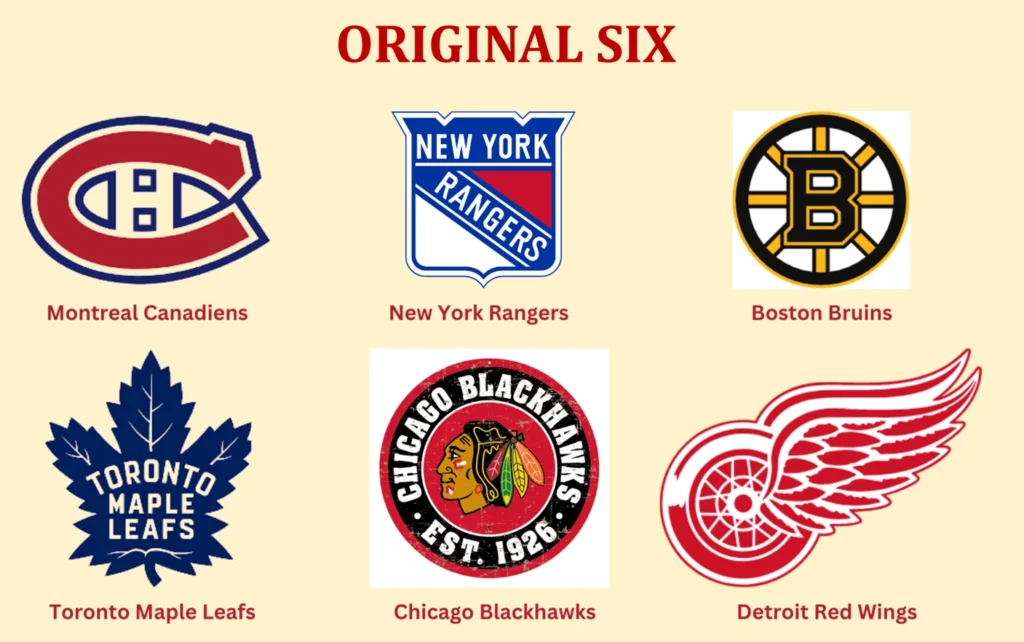
The Montreal Canadiens, Toronto Maple Leafs, New York Rangers, Boston Bruins, Chicago Blackhawks, and Detroit Red Wings were the six clubs that made up the “Original Six” era of 1942–1967, when the league stabilized. Legendary athletes and fierce rivalries that endure to this day were born during this time.
In 1967, the NHL underwent a major transformation with its first significant expansion, doubling in size by adding six new teams: the St. Louis Blues, Minnesota North Stars, California Seals, Los Angeles Kings, Pittsburgh Penguins, and Philadelphia Flyers. This expansion aimed to tap into new markets and increase the league’s footprint across North America.
Influence of Expansion on the League
The 1967 expansion marked the beginning of the NHL’s growth into a major professional sports league. It brought hockey to a broader audience and set the stage for further expansions in the 1970s, including the addition of the Vancouver Canucks, Buffalo Sabres, New York Islanders, and Edmonton Oilers, among others. The inclusion of the World Hockey Association (WHA) teams in 1979, such as the Winnipeg Jets, Quebec Nordiques, Edmonton Oilers, and Hartford Whalers, further enriched the league’s talent pool and competitive balance.
This era also saw the rise of television broadcasting, increasing the NHL’s visibility and popularity. The league’s expansion efforts helped cultivate a more diverse and widespread fan base, establishing hockey as a major sport in the United States and Canada.
Modern Era (1992-Present)
Recent Expansions and Team Relocations
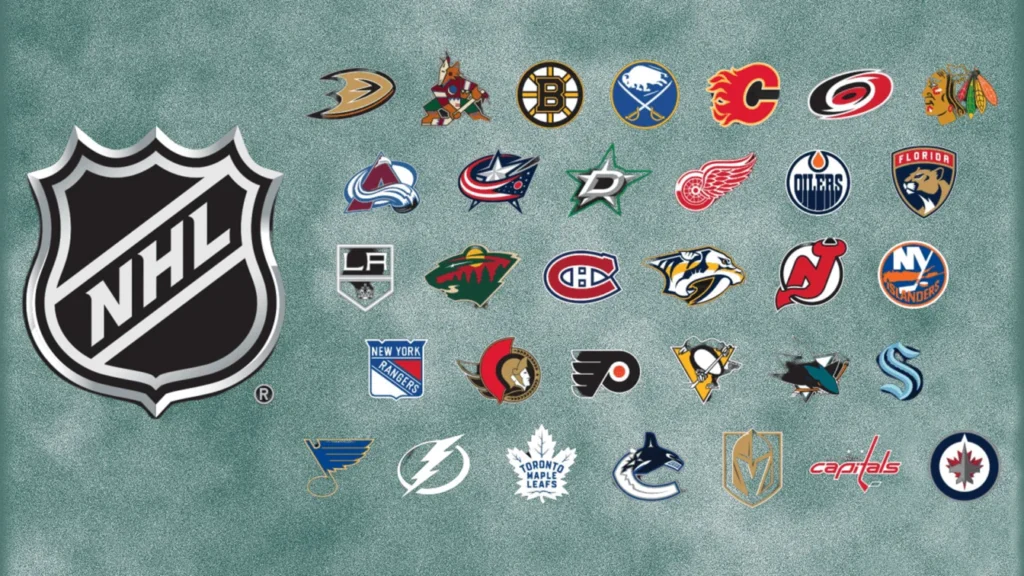
The modern era of the NHL has been characterized by continued growth and adaptation. In the 1990s, the league added several teams, including the San Jose Sharks (1991), Ottawa Senators (1992), Tampa Bay Lightning (1992), Florida Panthers (1993), and Anaheim Mighty Ducks (1993). This period also saw the relocation of teams to more viable markets, such as the Quebec Nordiques becoming the Colorado Avalanche in 1995 and the Winnipeg Jets relocating to become the Phoenix Coyotes (now Arizona Coyotes) in 1996.
In recent years, the NHL has continued to expand, with the addition of the Vegas Golden Knights in 2017 and the Seattle Kraken in 2021. These expansions have introduced the league to new regions and strengthened its presence on the West Coast.
Current Structure and Format
With two conferences—the Eastern Conference and the Western Conference—each with two divisions, the NHL currently consists of 32 teams. The regular season typically consists of 82 games, where teams compete to secure a spot in the Stanley Cup Playoffs, a rigorous four-round elimination tournament that determines the league champion.
The league has embraced technological advancements, incorporating video review and analytics to enhance the accuracy of officiating and the strategic depth of the game. The NHL also prioritizes player safety with continuous improvements in equipment and concussion protocols.
As the NHL moves forward, its commitment to innovation, inclusivity, and global outreach ensures it remains a dynamic and influential force in the world of professional sports. The league’s storied history and ongoing evolution promise to captivate and inspire hockey fans for generations to come.
Structure and Format of the NHL
Overview of Divisions and Conferences

The NHL is structured into two main conferences: the Eastern Conference and the Western Conference, each comprising two divisions. This alignment ensures a balanced distribution of teams geographically and competitively.
- Eastern Conference
- Atlantic Division: Features teams like the Boston Bruins, Toronto Maple Leafs, and Tampa Bay Lightning.
- Metropolitan Division: Includes the Washington Capitals, Pittsburgh Penguins, and New York Rangers.
- Western Conference
- Central Division: Contains teams such as the Colorado Avalanche, Chicago Blackhawks, and Dallas Stars.
- Pacific Division: Hosts the Vegas Golden Knights, Seattle Kraken, and Los Angeles Kings.
Each division typically consists of seven or eight teams, making a total of 32 teams in the league. This division ensures regional rivalries and reduces travel burdens, fostering intense local competition and fan engagement.
Regular Season Format
Schedule and Games
The NHL regular season usually spans from early October to early April, comprising 82 games for each team. The schedule is designed to ensure teams play a mix of intra-division, inter-division, and inter-conference games.
- Intra-division games: Teams play more frequently against divisional rivals, intensifying local rivalries and competitive spirit.
- Inter-division games: These games occur within the same conference but outside the team’s division.
- Inter-conference games: Teams face off against opponents from the opposite conference, showcasing different playing styles and strategies.
The balanced schedule ensures teams face a variety of opponents, which is crucial for a fair competition and maintaining fan interest throughout the season.
Points System and Standings
The NHL employs a points system to determine team standings in each division and conference:
- Win: 2 points
- Loss: 0 points
- Overtime or Shootout Loss: 1 point
Teams accumulate points throughout the season, and their standings are determined by the total points earned. If teams are tied in points, tiebreakers such as the number of regulation wins or head-to-head records are used to rank them. The top three teams from each division, along with two wild card teams from each conference (based on overall points), advance to the playoffs.
Playoff Format
Qualification and Structure
The NHL playoffs are a knockout tournament featuring 16 teams, eight from each conference. The qualification is based on regular-season standings:
- Top three teams from each division: These teams automatically qualify.
- Wild card teams: The next two highest-placed teams in each conference, regardless of division, earn wild card spots.
The playoffs consist of four rounds: the First Round, Second Round (Division Finals), Conference Finals, and the Stanley Cup Finals. Each round is a best-of-seven series, where the first team to win four games advances to the next round.
Stanley Cup Finals
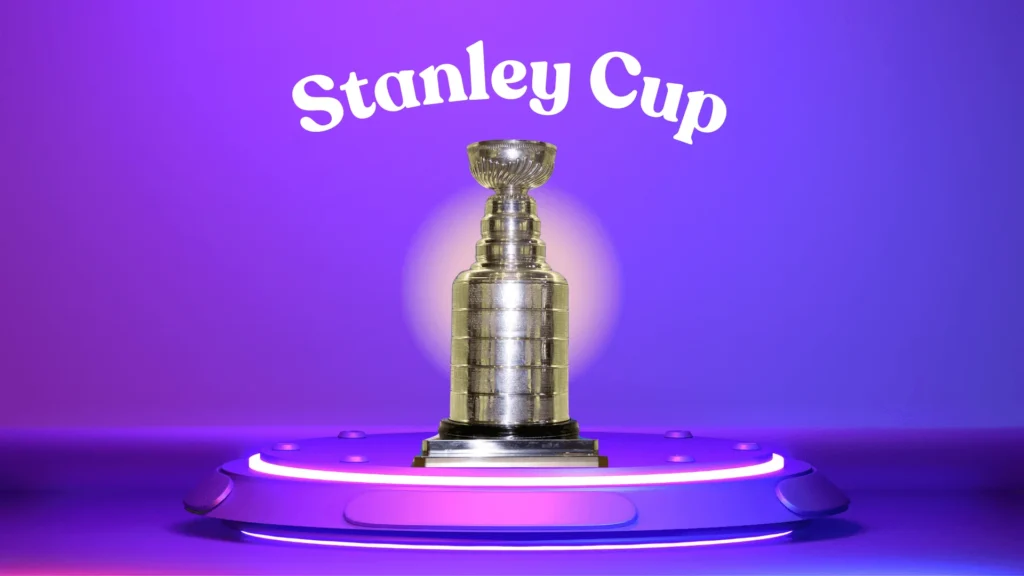
The Stanley Cup Finals are the culmination of the NHL season, featuring the champions of the Eastern and Western Conferences. This best-of-seven series determines the league champion, who is awarded the iconic Stanley Cup, one of the oldest and most revered trophies in professional sports.
The Stanley Cup Finals are a high-stakes, highly anticipated event, drawing significant media attention and fan engagement worldwide. The series often features intense competition, showcasing the pinnacle of professional hockey talent and determination.
Major Teams and Rivalries
Highlighting Iconic Teams
Montreal Canadiens
The Montreal Canadiens, established in 1909, are the oldest and most storied franchise in NHL history. Known affectionately as the Habs, the Canadiens boast an unparalleled 24 Stanley Cup championships, with their last victory in 1993. The team is celebrated for its rich history of legendary players, including Maurice “Rocket” Richard, Jean Béliveau, and Guy Lafleur. The Canadiens’ home, the Bell Centre, is one of the most vibrant arenas in the league, filled with passionate fans who uphold the team’s storied traditions and enduring legacy.
Toronto Maple Leafs
The Toronto Maple Leafs, founded in 1917, are one of the NHL’s most iconic and beloved teams. Despite a prolonged championship drought, with their last Stanley Cup win in 1967, the Maple Leafs command a vast and dedicated fanbase. The team has produced numerous hockey legends, such as Darryl Sittler, Mats Sundin, and more recently, Auston Matthews. The Maple Leafs play their home games at Scotiabank Arena, a venue that regularly sells out and resonates with the energy of loyal fans. Their blue-and-white jerseys are instantly recognizable, symbolizing one of the league’s most historic franchises.
Detroit Red Wings
The Detroit Red Wings, known as the “Original Six” team, have a rich history dating back to 1926. Nicknamed the “Winged Wheelers,” the Red Wings have won 11 Stanley Cup championships, making them one of the most successful franchises in NHL history. The team is renowned for its era of dominance in the 1990s and early 2000s, led by legends such as Gordie Howe, Steve Yzerman, and Nicklas Lidström. The Red Wings’ home, Little Caesars Arena, is a modern facility that hosts some of the most passionate hockey fans, known collectively as “Hockeytown.”
Famous Rivalries
Montreal Canadiens vs. Toronto Maple Leafs
The rivalry between the Montreal Canadiens and the Toronto Maple Leafs is one of the oldest and most intense in the NHL. Spanning over a century, this rivalry is steeped in history, with countless memorable moments and fierce battles. Both teams, being from Canada’s two largest cities, represent the pinnacle of hockey tradition and pride. The rivalry games are marked by their electric atmospheres, high stakes, and the deep-seated animosity between the fans. This historic clash continues to captivate audiences, symbolizing the heart and soul of Canadian hockey.
Boston Bruins vs. Montreal Canadiens
The Boston Bruins and Montreal Canadiens rivalry is perhaps the most storied and bitter in NHL history. With over 900 meetings and numerous playoff encounters, including 34 series, this rivalry is characterized by its intensity and longevity. The Canadiens have often been a thorn in the Bruins’ side, dominating many of their playoff matchups. Legendary moments, such as the iconic battles between Maurice Richard and the Bruins’ defense, have defined this rivalry. The games are fiercely contested, often physical, and always emotional, showcasing the deep-rooted animosity and respect between these two historic franchises.
Chicago Blackhawks vs. Detroit Red Wings
The rivalry between the Chicago Blackhawks and the Detroit Red Wings is one of the NHL’s most enduring and fierce. Originating from their days as part of the “Original Six,” this rivalry has seen numerous intense battles and memorable moments. The proximity of the two cities and their rich hockey traditions fuel the competitive spirit between the teams.
Legendary players like Gordie Howe, Bobby Hull, and more recently, Patrick Kane and Henrik Zetterberg, have all added to the storied history of this rivalry. Though the Red Wings have moved to the Eastern Conference, games between these two teams remain highly anticipated and fiercely contested, preserving the legacy of one of the league’s great rivalries.
Notable Players and Legends
Historical Legends
Wayne Gretzky
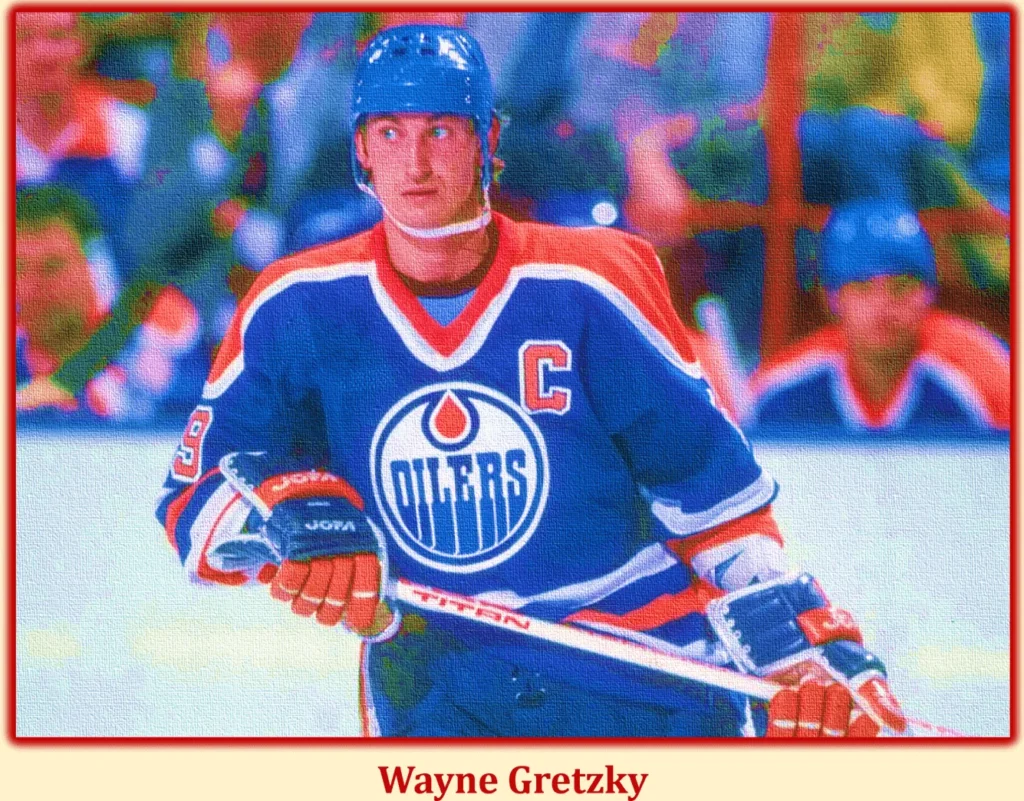
Most people agree that Wayne Gretzky, sometimes known as “The Great One,” is the best hockey player of all time. His career spanned from 1979 to 1999, during which he shattered numerous records and set new standards for excellence in the NHL. Gretzky holds an array of records, including the most career goals (894), assists (1,963), and points (2,857).
His vision, playmaking ability, and hockey IQ were unparalleled, allowing him to dominate the league throughout his career. Gretzky won four Stanley Cups with the Edmonton Oilers and was awarded the Hart Trophy as the league’s most valuable player nine times. His impact on the game transcends statistics, as he popularized hockey in the United States and inspired countless young players to pursue the sport.
Bobby Orr
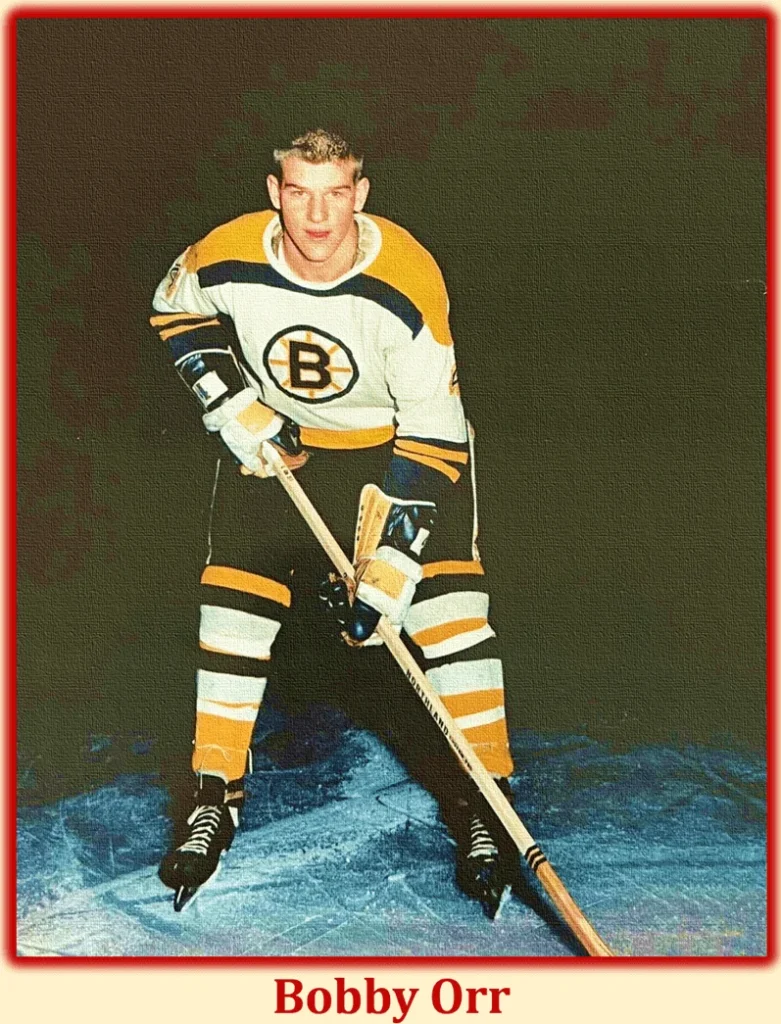
Bobby Orr revolutionized the defenseman position with his extraordinary skating, offensive prowess, and dynamic play. Playing primarily for the Boston Bruins from 1966 to 1978, Orr won eight consecutive Norris Trophies as the NHL’s best defenseman and three Hart Trophies as the league’s MVP. His most iconic moment came in 1970 when he scored the Stanley Cup-winning goal in overtime, captured in a famous photograph that symbolizes his greatness. Despite a career shortened by knee injuries, Orr’s influence on the game endures. He redefined the role of a defenseman, paving the way for future generations to emulate his style and impact.
Maurice “Rocket” Richard
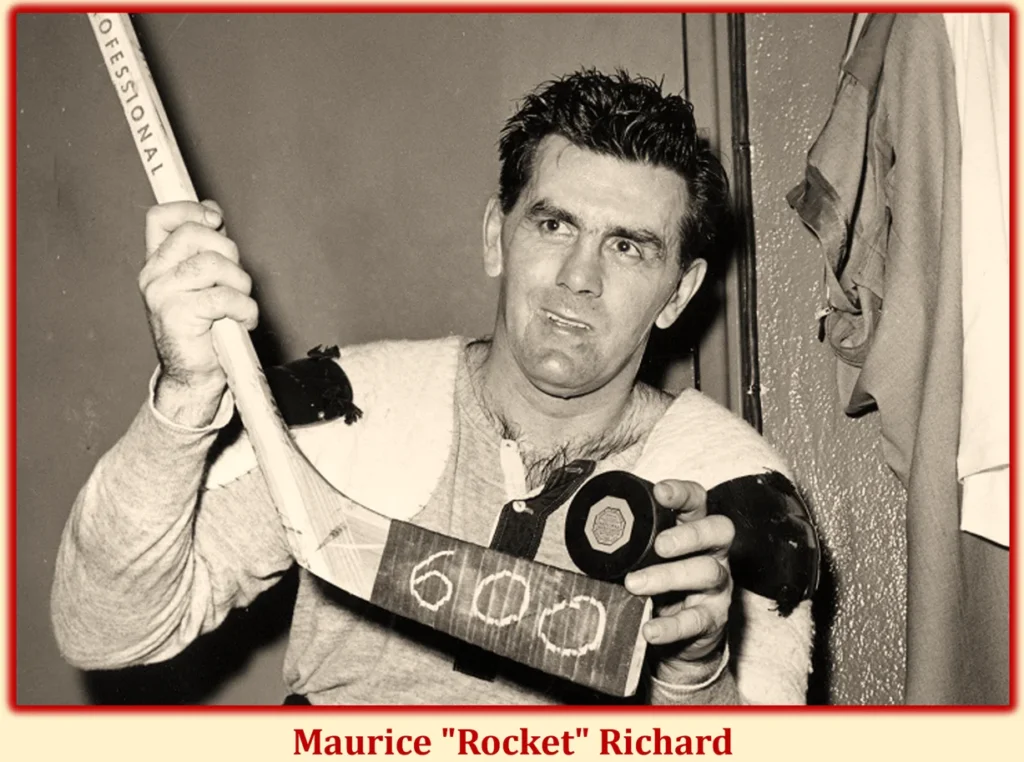
Maurice “Rocket” Richard was a trailblazer and a cultural icon in the NHL. Playing for the Montreal Canadiens from 1942 to 1960, Richard was the first player to score 50 goals in 50 games and the first to reach 500 career goals. Known for his fierce competitiveness, scoring ability, and fiery temperament, Richard was a central figure in the Canadiens’ dynasty, helping the team win eight Stanley Cups. His impact extended beyond the rink, as he became a symbol of French-Canadian pride and resilience. Richard’s legacy lives on in the NHL, with the Maurice “Rocket” Richard Trophy awarded annually to the league’s top goal scorer.
Current Superstars
Sidney Crosby
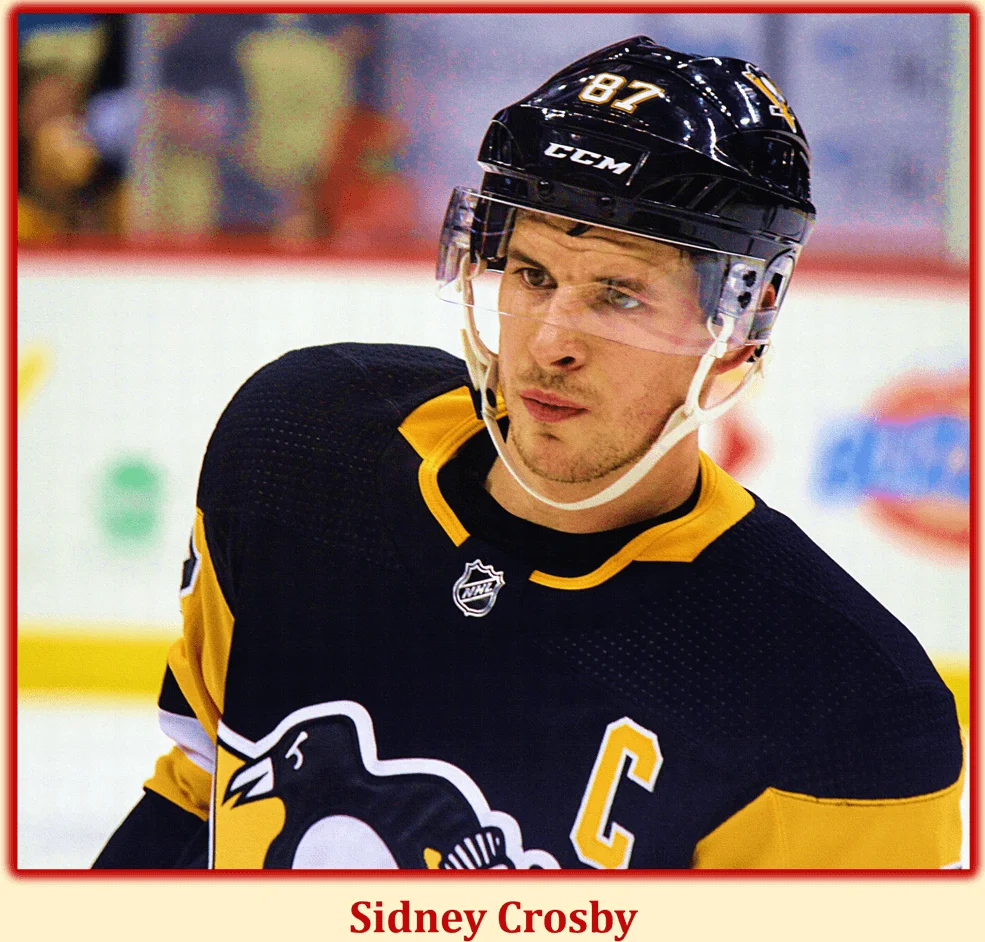
Sidney Crosby, often hailed as one of the best players of his generation, has been a dominant force in the NHL since his debut in 2005. Playing for the Pittsburgh Penguins, Crosby has won three Stanley Cups (2009, 2016, 2017) and has been awarded the Hart Trophy twice as the league’s MVP. Known for his incredible skill, vision, and leadership, Crosby excels in all facets of the game, making him a perennial contender for scoring titles and MVP honors. His “Golden Goal” in the 2010 Winter Olympics, where he scored the game-winning goal for Canada in overtime, further cemented his status as a hockey legend. Crosby’s dedication, work ethic, and consistent excellence continue to inspire fans and players alike.
Alex Ovechkin
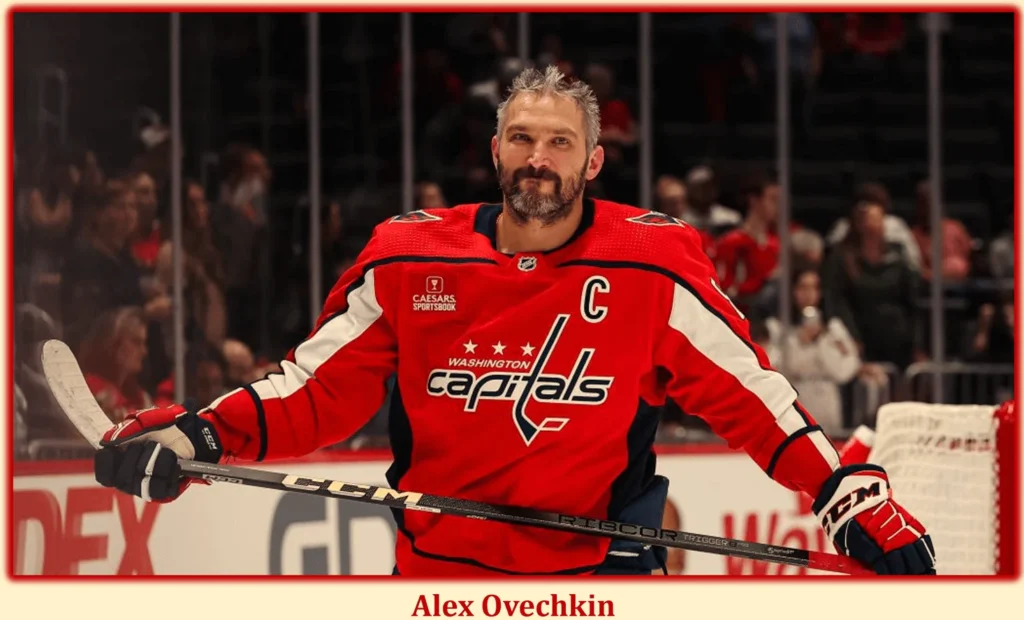
Alex Ovechkin, the “Great Eight,” is renowned for his goal-scoring prowess and physical style of play. Since entering the NHL in 2005, Ovechkin has consistently been one of the league’s top scorers, winning the Maurice “Rocket” Richard Trophy nine times. In 2018, he led the Washington Capitals to their first-ever Stanley Cup, earning the Conn Smythe Trophy as the playoff MVP.
Ovechkin’s powerful shot, athleticism, and charismatic personality have made him a fan favorite and a global ambassador for the sport. As he continues to climb the all-time goal-scoring list, Ovechkin’s pursuit of Wayne Gretzky’s record adds an exciting narrative to his illustrious career.
Connor McDavid

Connor McDavid, often compared to legends like Gretzky and Crosby, is widely considered the most electrifying player in the NHL today. Since being drafted first overall by the Edmonton Oilers in 2015, McDavid has dazzled fans with his speed, skill, and playmaking ability. He has won multiple Hart Trophies and Art Ross Trophies as the league’s top scorer. McDavid’s ability to dominate games with his exceptional skating and vision sets him apart, making him a constant highlight reel. As the captain of the Oilers, he continues to push the boundaries of what is possible on the ice, setting new standards for future generations.
Key Moments in NHL History
Memorable Games and Events
The Miracle on Ice
The “Miracle on Ice” is one of the most iconic moments in the history of sports, not just hockey. Although it occurred during the 1980 Winter Olympics rather than an NHL event, its impact on the NHL and hockey in North America was profound. The United States men’s hockey team, composed primarily of college players, faced off against the heavily favored Soviet Union team, widely regarded as the best in the world.
The U.S. team’s stunning 4-3 victory on February 22, 1980, captivated the nation and inspired a surge of interest in hockey across America. The victory, followed by a gold medal win against Finland, demonstrated the potential for underdog teams to triumph in the sport and is often credited with helping to grow the popularity of hockey in the United States.
The Wayne Gretzky Trade
On August 9, 1988, the hockey world was shocked by the trade of Wayne Gretzky from the Edmonton Oilers to the Los Angeles Kings. Gretzky, already an NHL superstar and considered the greatest player of all time, was traded along with Marty McSorley and Mike Krushelnyski for Jimmy Carson, Martin Gelinas, three first-round draft picks, and $15 million.
This trade had a monumental impact on the NHL, as it helped to popularize hockey in non-traditional markets, particularly in California and the southwestern United States. The “Great One’s” move to Los Angeles brought unprecedented media attention to the NHL and played a crucial role in the league’s expansion and growth in the United States during the 1990s.
The 2004-05 Lockout
The 2004-05 NHL lockout was a significant and unprecedented event in professional sports. The entire season was canceled due to a labor dispute between the NHL owners and the NHL Players’ Association (NHLPA) over salary caps and revenue sharing. This was the first time a major North American professional sports league had lost an entire season due to a labor dispute. The lockout led to a complete overhaul of the league’s financial structure, resulting in the implementation of a salary cap designed to ensure competitive balance and financial stability. While the lockout was a challenging period for the league, its resolution paved the way for a more sustainable and competitive NHL.
Record-Breaking Performances
Most Goals in a Season
The record for the most goals in a single NHL season is held by Wayne Gretzky, who scored an astonishing 92 goals during the 1981-82 season while playing for the Edmonton Oilers. This remarkable achievement showcases Gretzky’s unparalleled scoring ability and offensive dominance. His record has stood the test of time and is considered one of the most unbreakable records in sports. Gretzky’s ability to consistently find the back of the net set a standard for goal-scoring that has yet to be matched.
Most Points in a Career
Wayne Gretzky also holds the record for the most career points in NHL history, with a total of 2,857 points (894 goals and 1,963 assists). This record, achieved over 20 seasons, underscores Gretzky’s status as the greatest playmaker and scorer in the history of the game. His vision, hockey intelligence, and ability to create scoring opportunities for himself and his teammates were unparalleled. Gretzky’s career points record is considered one of the most untouchable milestones in professional sports, with the next closest player, Jaromir Jagr, trailing by nearly 1,000 points.
The Global Influence of the NHL
NHL’s Impact on Global Hockey
International Players in the NHL
The NHL has long been a melting pot of talent from around the world, significantly impacting global hockey. In the league’s early years, players were predominantly from Canada, but over time, the NHL has attracted top talent from various countries. Today, the league features a diverse array of international players from nations such as Sweden, Russia, Finland, the Czech Republic, and the United States. This influx of global talent has not only elevated the level of play but also brought different playing styles and cultural influences to the league.
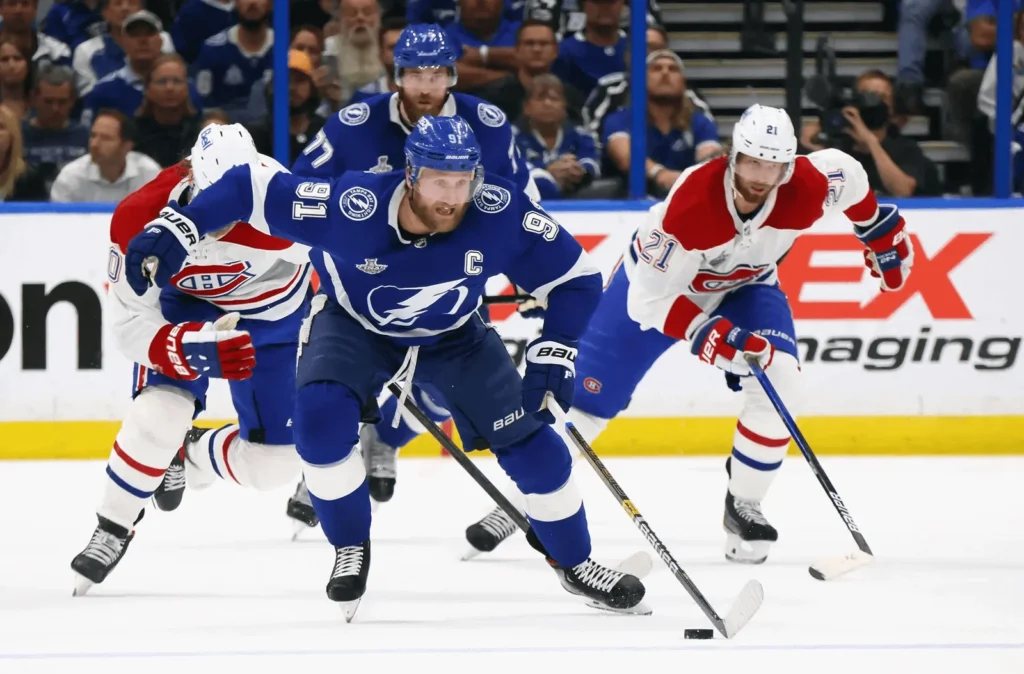
International stars like Sweden’s Peter Forsberg, Russia’s Alexander Ovechkin, and Finland’s Teemu Selanne have left indelible marks on the NHL, inspiring future generations of players in their home countries. The presence of these international players has also helped the NHL expand its reach and appeal to fans across the globe, fostering a more inclusive and global community around the sport of hockey.
NHL’s Role in the Winter Olympics
The NHL’s participation in the Winter Olympics has played a crucial role in raising the profile of the league and the sport on the global stage. Starting with the 1998 Winter Olympics in Nagano, Japan, the NHL allowed its players to compete in the Olympics, bringing the best hockey talent to the premier international event. This decision was monumental, as it showcased NHL stars to a worldwide audience and demonstrated the league’s commitment to growing the sport.
The Olympic participation of NHL players led to memorable moments and high-quality competition, such as the 2002 gold medal game in Salt Lake City, where Canada defeated the United States, and the thrilling 2010 gold medal game in Vancouver, where Sidney Crosby scored the “Golden Goal” in overtime to secure victory for Canada against the United States. These events have significantly boosted the NHL’s visibility and popularity internationally, encouraging more young athletes to pursue hockey.
Expansion of the NHL’s Fanbase Worldwide
The NHL has actively worked to expand its fanbase beyond North America, leveraging various strategies to attract and engage international audiences. Key initiatives include:
Global Series and International Games
The NHL has organized regular-season games and exhibition matches in various countries, such as Sweden, Finland, Germany, China, and the Czech Republic. These events, known as the NHL Global Series, allow international fans to experience the excitement of NHL hockey live and in person. By bringing games to different parts of the world, the NHL fosters a stronger connection with global fans and promotes the sport in emerging markets.
Digital and Social Media Outreach
The NHL leverages digital platforms and social media to reach a global audience. Through streaming services, international broadcast partnerships, and social media engagement, the league ensures that fans worldwide can access live games, highlights, and exclusive content. This digital presence allows the NHL to maintain and grow its global fanbase by making the sport more accessible to international audiences.
Grassroots Programs and Development
The NHL collaborates with various hockey organizations worldwide to support grassroots programs and youth development initiatives. By investing in coaching, training, and facilities, the league helps cultivate the next generation of hockey talent globally. These efforts not only enhance the skill level of players worldwide but also build a broader base of fans who grow up with a passion for the sport.
International Player Outreach and Community Engagement
Many international NHL players actively engage with their home countries’ communities, hosting hockey camps, clinics, and charity events. These players serve as ambassadors for the sport, inspiring young athletes and fans through their success and commitment to giving back. The personal connections and role models provided by these players help strengthen the NHL’s influence and presence worldwide.
Technology and Innovation in the NHL
Advances in Equipment and Player Safety
Helmets, Pads, and Sticks

The NHL has seen significant advancements in equipment technology, dramatically enhancing player safety and performance.
- Helmets: Helmets have evolved from simple leather headgear to sophisticated protective equipment made of lightweight, impact-resistant materials such as polycarbonate. Modern helmets feature advanced padding systems designed to absorb and dissipate the force of impacts, reducing the risk of concussions and head injuries. Innovations like the integrated visor and full-face shields offer additional protection for players’ faces and eyes.
- Pads: The design and materials of pads have improved considerably. Shoulder, elbow, and shin pads are now constructed using high-density foams and plastics, providing better protection while maintaining mobility. Goalies’ pads, in particular, have seen innovations like lighter materials and more ergonomic designs, allowing for quicker movements and better coverage without compromising safety.
- Sticks: Hockey sticks have transitioned from wooden models to composite sticks made from carbon fiber and fiberglass. These modern sticks are not only lighter and more durable but also provide greater flex and power, enhancing shooting accuracy and speed. The evolution of stick technology has significantly impacted the game, allowing players to execute faster shots and passes with more precision.
These advancements in equipment technology reflect the NHL’s ongoing commitment to player safety and performance, ensuring that athletes can compete at the highest level with reduced risk of injury.
Use of Technology in Training and Game Analysis
Video Review and Analytics
Technology has revolutionized how teams train and analyze games, leading to more strategic and informed decision-making.
- Video Review: High-definition video and slow-motion replay have become essential tools for coaches and players. Video review allows teams to dissect every aspect of a game, from individual player performances to team strategies. Coaches use video to highlight strengths, identify weaknesses, and devise game plans tailored to exploit opponents’ vulnerabilities. Instant replay technology also plays a crucial role in officiating, helping referees make accurate calls on goals, offsides, and penalties.
- Analytics: Advanced analytics have transformed the way teams evaluate performance and make strategic decisions. Metrics such as Corsi (shot attempts), Fenwick (unblocked shot attempts), and Expected Goals (xG) provide deeper insights into a player’s or team’s effectiveness beyond traditional statistics like goals and assists. Data analytics help teams optimize line combinations, manage player ice time, and make informed decisions in trades and draft selections. Analytics also contribute to player development by identifying areas for improvement and tracking progress over time.
Wearable Tech and Performance Tracking
Wearable technology and performance tracking systems have become integral to the NHL’s approach to training and player development.
- Wearable Tech: Devices such as GPS trackers, heart rate monitors, and accelerometers are used to collect data on players’ physical performance during practices and games. These devices measure metrics like speed, distance covered, heart rate, and exertion levels, providing valuable insights into players’ conditioning and endurance. Coaches and trainers use this data to tailor training programs, manage workloads, and prevent injuries by ensuring players are not overexerting themselves.
- Performance Tracking: Sophisticated software and applications aggregate and analyze data from wearable devices, offering real-time feedback and long-term performance trends. Teams can monitor players’ recovery times, track their progress, and adjust training regimens accordingly. Performance tracking also helps in injury rehabilitation, as trainers can design specific recovery protocols based on precise data, ensuring players return to peak condition safely and efficiently.
Future of the NHL
Upcoming Expansions and Relocations
Possible New Teams and Markets
As the NHL continues to grow, there are ongoing discussions about expanding the league to new markets and potentially relocating existing teams. Recent expansions, like the addition of the Vegas Golden Knights in 2017 and the Seattle Kraken in 2021, have proven successful, both in terms of on-ice performance and fan engagement. These successes have fueled speculation about further expansions.
- New Markets: Cities such as Houston, Texas, and Quebec City, Quebec, are frequently mentioned as potential locations for new NHL teams. Houston, the fourth-largest city in the United States, presents a significant market opportunity with a large population and a strong sports culture. Quebec City, with its rich hockey history and dedicated fanbase, is another strong candidate, particularly given its previous experience hosting the Nordiques before their relocation to Colorado.
- Relocations: While expansion is the primary focus, there are also ongoing discussions about the potential relocation of existing franchises struggling with attendance or financial issues. Teams like the Arizona Coyotes have faced challenges in recent years, leading to speculation about possible moves to more viable markets.
Trends and Predictions
Youth Development and Diversity
The future of the NHL depends heavily on the development of young talent and the diversification of its player base.
- Youth Development: The NHL is investing in youth hockey programs to nurture the next generation of players. Initiatives like Learn to Play and partnerships with grassroots organizations aim to make hockey more accessible to children of all backgrounds. By providing affordable equipment and training opportunities, the NHL hopes to grow the sport at the youth level, ensuring a steady pipeline of talent.
- Diversity: Increasing diversity within the league is a major focus. Programs designed to promote hockey among underrepresented communities are being expanded. The NHL has also committed to creating a more inclusive environment through initiatives like the Hockey is for Everyone campaign, which supports LGBTQ+ inclusion, racial diversity, and accessibility for people with disabilities. These efforts are crucial for the league’s growth and relevance in a changing social landscape.
Technological Advancements and Rule Changes
Technology and innovation will continue to shape the NHL’s future, impacting everything from gameplay to fan engagement.
- Technological Advancements: Emerging technologies such as augmented reality (AR) and virtual reality (VR) are set to enhance the fan experience, offering immersive ways to watch games and interact with content. Additionally, advancements in player tracking and analytics will provide deeper insights into performance, helping teams make data-driven decisions.
- Rule Changes: To keep the game exciting and safe, the NHL regularly reviews and updates its rules. Future changes may include adjustments to improve player safety, such as stricter enforcement of penalties for dangerous plays, or innovations to enhance the pace and entertainment value of the game, such as tweaks to overtime formats or offside rules. The league’s willingness to adapt and evolve is key to maintaining its appeal.
Conclusion & FAQs
The NHL stands as a cornerstone of professional sports, celebrated for its rich history, thrilling gameplay, and global influence. From its early days to its current status as a premier league, the NHL has continually evolved, embracing change while honoring its traditions.
For many, the NHL is more than just a sport; it’s a source of community and personal connection. Whether it’s the joy of attending a live game, the excitement of following a favorite team, or the shared experiences with fellow fans, hockey has a unique ability to bring people together. Reflecting on personal memories, such as witnessing historic games or meeting NHL legends, highlights the league’s profound impact on individuals and communities.
To truly appreciate the NHL’s significance and contribute to its vibrant future, fans are encouraged to engage with the league in various ways. Watching games, participating in local hockey programs, and supporting initiatives that promote diversity and inclusion are all meaningful ways to be involved. Additionally, staying informed about league developments and advocating for positive changes can help shape the NHL’s future.
The NHL’s journey is one of continuous growth and innovation, and its future looks bright with the promise of new markets, technological advancements, and a commitment to inclusivity. By engaging with the NHL, fans can play a part in this exciting evolution, ensuring that hockey remains a beloved sport for generations to come.
Frequently Asked Questions (FAQs)
What are some upcoming expansions and potential new teams in the NHL?
The NHL is exploring opportunities to expand its footprint with possible new teams in markets like Houston, Texas, and Quebec City, Quebec. These cities have shown strong interest and support for hockey, making them attractive candidates for future expansion.
How does the NHL support youth development and diversity?
The NHL is committed to growing the sport through initiatives like Learn to Play, which provides affordable access to hockey equipment and training for children. Additionally, the league promotes diversity through programs that encourage participation among underrepresented communities and support inclusivity in all aspects of the game.
What role does technology play in the NHL’s future?
Technology is integral to the NHL’s future, enhancing everything from player performance tracking to fan engagement. Innovations such as wearable tech for players, advanced analytics for teams, and immersive fan experiences through augmented reality (AR) and virtual reality (VR) are shaping the league’s evolution.
How does the NHL handle potential team relocations?
Team relocations are carefully considered based on factors such as attendance, financial viability, and market potential. While the NHL prioritizes stability for existing franchises, it also evaluates opportunities to relocate teams to markets where hockey can thrive and grow.
What are some anticipated trends in NHL rule changes?
The NHL continually reviews its rules to improve player safety and enhance the pace and excitement of the game. Future rule changes may focus on increasing safety measures, refining overtime formats, or implementing innovations that maintain the integrity and appeal of hockey.
How does the NHL contribute to global hockey through international players and events like the Winter Olympics?
The NHL’s inclusion of international players and participation in events like the Winter Olympics showcase the league’s global reach and influence. By featuring top talent from around the world, the NHL promotes international camaraderie and elevates the sport’s prestige on a global stage.
What are some memorable moments in NHL history that have shaped the league?
Memorable moments such as the “Miracle on Ice” during the 1980 Winter Olympics, Wayne Gretzky’s trade to the Los Angeles Kings, and the impact of the 2004-05 lockout have all left enduring legacies on the NHL, influencing its growth, popularity, and development.
How can fans actively engage with the NHL and support its future?
Fans can engage with the NHL by attending games, following their favorite teams, participating in local hockey programs, and advocating for initiatives that promote diversity and inclusivity within the sport. Supporting NHL content, sharing experiences on social media, and staying informed about league updates also contribute to the league’s continued success.
